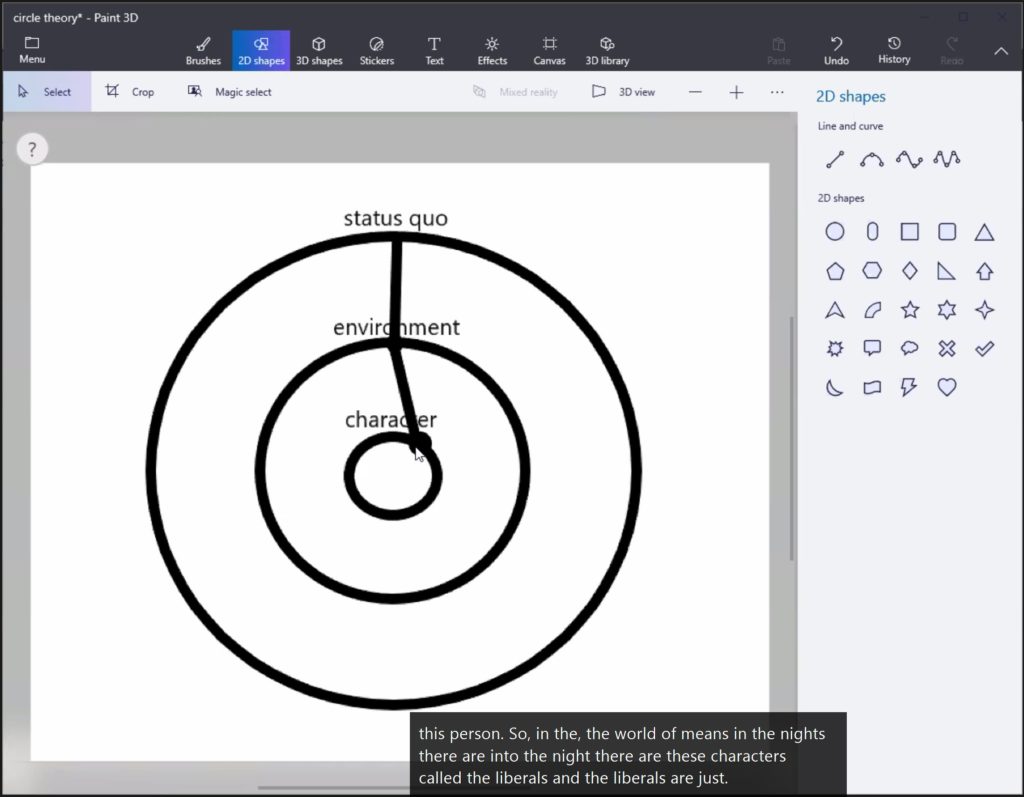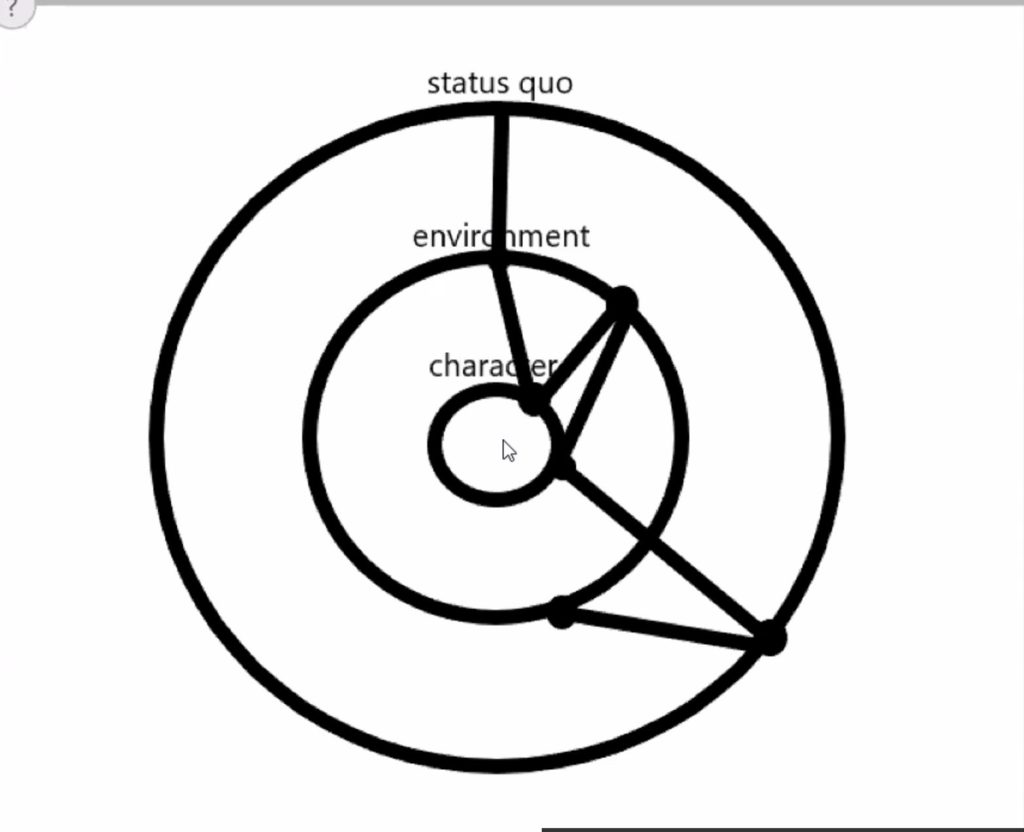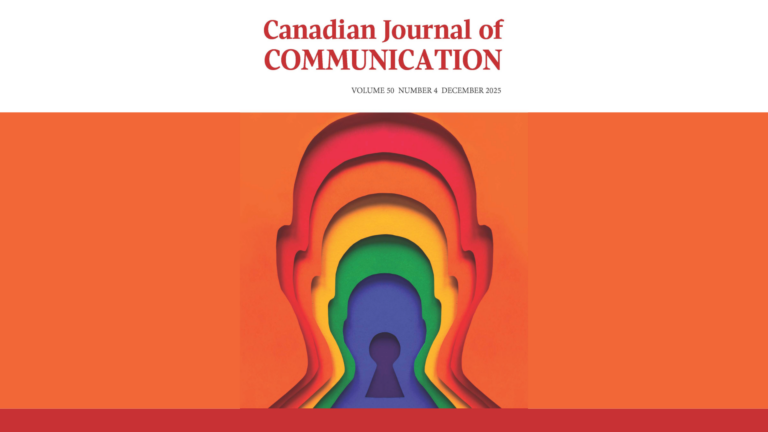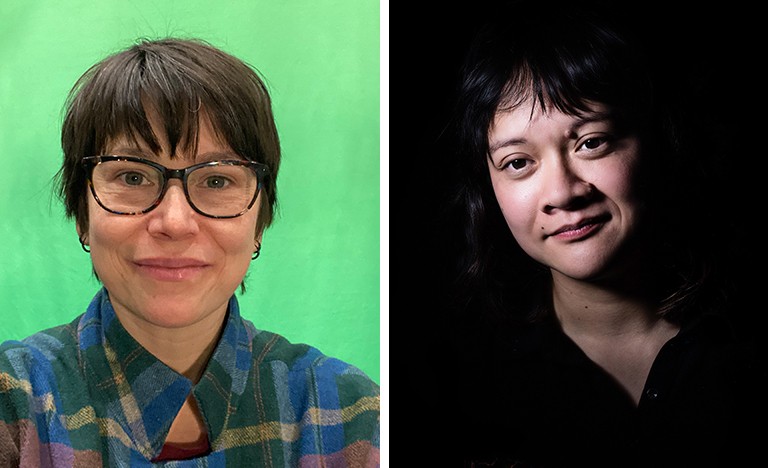On December 9th, 2021, when TAG welcomed Orion D. Black to present on Circle Theory—a visual narrative tool developed by Black that helps develop story arcs, worldbuilding, and character—for their Global Speaker Series, Rethinking Playfulness, I knew I was in for a treat. I come to this topic as someone invested in how humans tell stories, and how the systems and rules around us communicate and impose the shapes of these narratives onto people and places.
What I knew about Orion D. Black was that they were a creator that I admired who often had interesting observations about games and creative work and that Orion made cool stuff. I think that I had expected Circle Theory to align more with things like Hunicke, LeBlanc and Zubek’s MDA Game Design Framework (mechanics, dynamics, aesthetics) (2004) or maybe even TAG’s own Khaled, Lessard, and Barr’s cheekily named MDMA framework for recording and recovering digital game design practices using journaling and code repositories (2018). To my absolute delight, Circle Theory is more about making excellent, cohesive stories with satisfying interrelations. My fascination with how stories are made and what makes them compelling is what carried me through an Undergrad and Master’s in creative writing. Of course, I still do that as a game designer, but my interest is long-standing.
One of the first things that Orion told the audience was, “I make sure that the things that I create are very easy to understand; I always want to make sure that as accessible as possible.” Circle Theory and its visual representation is simple to understand and use, but that doesn’t mean that the stories that it maps are any less complex or interesting. In fact, by being able to show the connections in a way that’s easy to parse, Orion explained how this leads to richer, more grounded-in-the-lore motivations for characters and events in a narrative.

In mapping out the interrelations between the rings of the circle and moving between the layers, Orion showed us how the status quo and its systems encapsulate and influence the environments within them, which in turn inform and change character. And, though it’s a two-way relationship, it’s much easier for the status quo and the environment to act on a character than it is for the character to overcome the inertia of the status quo.
Although Orion didn’t make any direct claims about this, something that they illustrated through their choice of examples was how Circle Theory can be a tool for understanding any kind of narrative, including non-fiction ones, like the structures and systems that we exist within. Using themselves as an example, Orion talked about their status quo: an economic structure called capitalism.
“Capitalism,” said Orion, “affects my whole experience.”

The status quo is always difficult for a character to affect directly, but what any character can do is impact other characters and their “sphere of influence,” so to speak, in smaller ways. In this way, Circle Theory can be used to think through *a* narrative or “the grand narrative” of systems that operate in our culture.
Orion also talked about how Circle Theory came about and how their original use of it was informed by their experience with game design. With Mutants in the Night, Orion explored experiences of marginalization and intersectionality using mutants as an allegory for those experiences. Using Circle Theory helped Orion to explore questions such as, “What does it mean to live in under-resourced areas for those who experience it directly? How does it affect community and ownership?”
Importantly, Orion explained, for game designers creating tabletop roleplaying games, players define their own characters, meaning that the status quo and environment are an opportunity to help players inform their choices through effective world-building and an understanding communicated in the game writing about how different elements of the world might impact their character. This is different from stories with a set narrative, which can drive toward a set conclusion because of escalating stakes, rather than from the world and characters making meaningful decisions in accordance with who they are. Think Star Wars, and how Luke goes from simple farm boy to Prophesied Saviour of the Galaxy, upsetting the galactic Empire with just a few quirky sidekicks, or the way that Final Fantasy games always seem to escalate to an ending where the characters dethrone (a) God. Orion was careful to discuss how it enriches a story if the action is informed by the different layers of status quo, environment, and character, like the ripples on the surface of a pond.

Having that discussion made me consider how stories that reach for the big stakes feel like they’ve earned it. What Orion said holds true for many of the narratives I admire. The first one that came to mind for me was N. K. Jemisin’s Broken Earth trilogy, which is extremely rich in lore and relationships that make the world-changing events of the books feel justified. At the core of that trilogy is the relationship between a mother and child, and that mother’s relationship to herself, both as who she is now and who she has been. Many readers responded to that configuration of relationships and the trilogy is excellent for anyone who likes SFF — but you don’t have to take my word for it. Every single book in the trilogy has won a Hugo award. Just talking about it makes me want to reread it for maybe the fourth or fifth time.
Orion’s overview of Circle Theory was accessible while still showing how the tool can be used at any level of depth that the person working with it would like. Personally, I can already see projects of my own that would benefit from being mapped out with Circle Theory. Thanks, Orion!
If you missed the talk, here’s a full recording of it:
You can still check out Black’s Mutants in the Night on itch.io, and Dimension 20 (for which Orion is the Creative Director) on either Dropout or YouTube. Orion tweets from @OrionDBlack.
REFERENCES
Robin Hunicke, Marc Leblanc, and Robert Zubek. 2004. MDA: A Formal Approach to Game Design and Game Research. In Proceedings of the Challenges in Game AI Workshop, Nineteenth National Conference on Artificial Intelligence.
Khaled, R., Lessard, J., and Barr, P. Documenting Trajectories in Design Space: a Methodology for Applied Game Design Research. In the Proceedings of FDG 2018.



